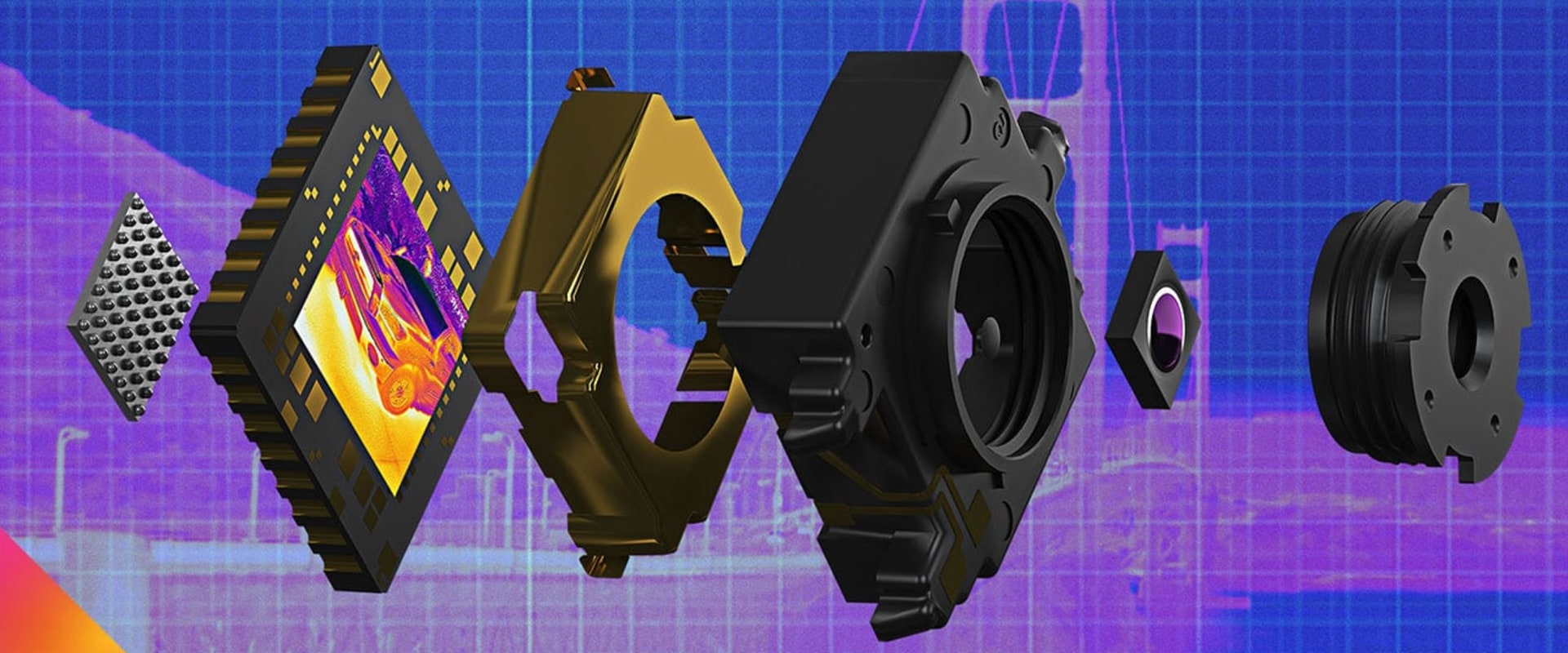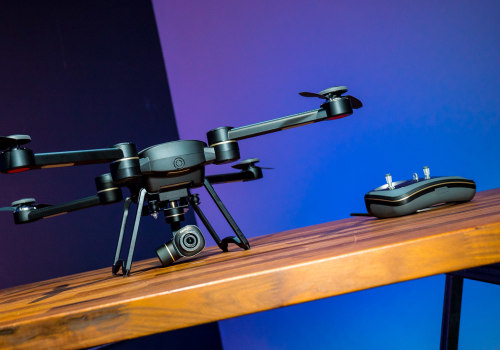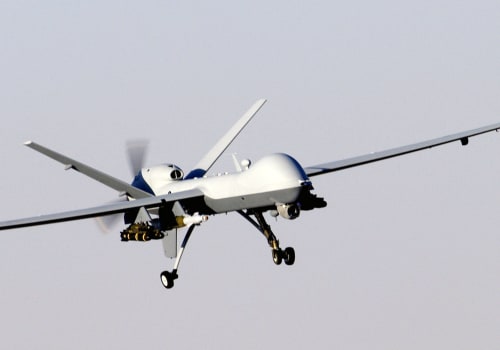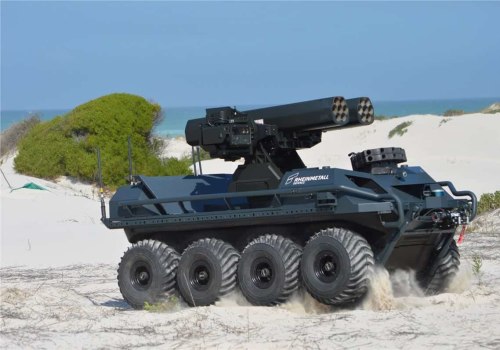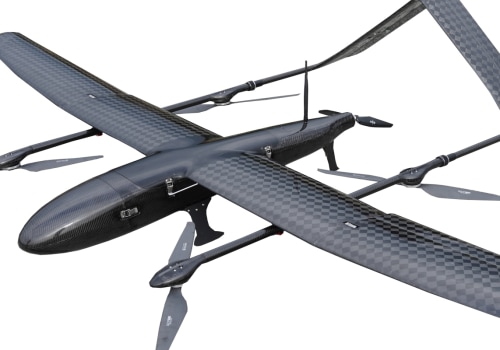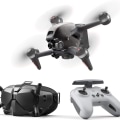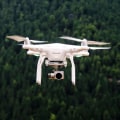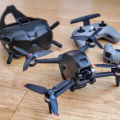Thermal cameras are the latest and greatest in the world of drone technology. They offer a unique way to capture images and videos of objects and landscapes from a bird's eye view. By using an infrared camera, thermal cameras can detect and measure heat energy emitted from objects in its field of view, providing detailed images and videos that are invisible to the naked eye. In this article, we will explore the different types of thermal cameras available for use with drones, how they work, and their many uses.
Thermal Cameras
are an important type of drone camera that can be used for a variety of purposes.Thermal cameras are able to detect infrared radiation, which is emitted by all objects based on their temperature. This makes them extremely useful for a variety of applications, such as search and rescue operations, surveillance, and industrial inspections. Thermal cameras are available in a variety of shapes and sizes, allowing them to be easily integrated into different types of drones. Thermal cameras work by detecting infrared radiation from objects. The camera then uses this information to generate a thermal image, which is a visual representation of the temperature distribution across the scene.
This is useful for applications such as search and rescue, where objects with higher temperatures can be easily identified. Thermal cameras also have the advantage of being able to detect objects in low-light conditions and in total darkness, making them an ideal choice for nighttime surveillance. Thermal cameras have a number of benefits compared to other types of drone cameras. For example, they are able to detect temperature changes, which can be used to identify potential problems in industrial settings. Additionally, thermal cameras can be used to monitor the health of crops in agricultural applications, as well as to detect animals in wildlife monitoring operations.
Thermal cameras also offer improved safety in search and rescue operations, as they are able to easily detect heat sources such as people or animals. Despite the many advantages of using thermal cameras, there are some potential drawbacks. For example, they are typically more expensive than other types of drone cameras, such as visible light cameras or infrared cameras. Additionally, thermal cameras have limited range and resolution compared to other types of cameras, which can limit their usefulness for certain applications. Overall, thermal cameras are an important type of drone camera that can be used for a variety of applications. They offer improved safety and efficiency in search and rescue operations and surveillance, and can be used to detect temperature changes in industrial settings.
While they are typically more expensive than other types of drone cameras, they offer improved capabilities that can be invaluable in certain situations.
Types of Thermal Cameras
Thermal cameras are an important type of drone camera used for a variety of purposes. There are two main types of thermal cameras: uncooled and cooled thermal cameras.Uncooled Thermal Cameras
Uncooled thermal cameras don’t require any refrigeration, making them simpler and more reliable than cooled thermal cameras. They are less sensitive than cooled thermal cameras, but they are also more affordable and easier to maintain.Cooled Thermal CamerasCooled thermal cameras require refrigeration in order to work, making them more expensive than uncooled thermal cameras. However, they are also much more sensitive and accurate, making them ideal for applications where precise measurements are required. The main benefit of cooled thermal cameras is that they can detect extremely small temperature changes, making them extremely accurate. However, this also makes them more expensive and complex to maintain.
When choosing between the two types of thermal cameras, it is important to consider the application and the accuracy required for the job. Uncooled thermal cameras are best for most applications, but cooled thermal cameras may be necessary for more precise measurements.
Applications for Thermal Cameras
Thermal cameras are a highly versatile type of drone camera that can be used for a variety of applications. In search and rescue operations, thermal cameras can be used to detect and identify heat sources, such as people in distress. Thermal cameras can also be used for surveillance purposes, as they can detect body heat from far away and identify individuals.Additionally, thermal cameras can be used for industrial inspections, as they allow for the detection of structural issues that may not be visible with the naked eye. Thermal cameras provide valuable insights that can make search and rescue operations, surveillance, and industrial inspections much more efficient. For instance, search and rescue teams can use thermal cameras to locate people in need of help quickly and accurately, allowing them to respond faster. Thermal cameras can also be used to monitor certain areas for suspicious activity, allowing law enforcement and security personnel to keep an eye on potential threats.
Lastly, thermal cameras can detect structural issues in industrial settings that may otherwise go unnoticed, helping to prevent costly repairs and downtime. Thermal cameras are an important tool for a variety of applications, from security to surveillance and beyond. Thermal cameras offer unique capabilities that can be used to detect heat sources and monitor temperature changes in a wide range of environments. Different types of thermal cameras are available, each with its own advantages and limitations. It is important to select the right type of thermal camera for the specific application in order to ensure maximum performance.
With the right thermal camera, users can easily monitor temperature changes and detect heat sources for various applications. In conclusion, thermal cameras are an invaluable tool for many applications. They provide users with a unique set of capabilities that can be used to detect heat sources and monitor temperature changes in a range of environments. It is important to choose the right type of thermal camera for a given application in order to ensure maximum performance.
